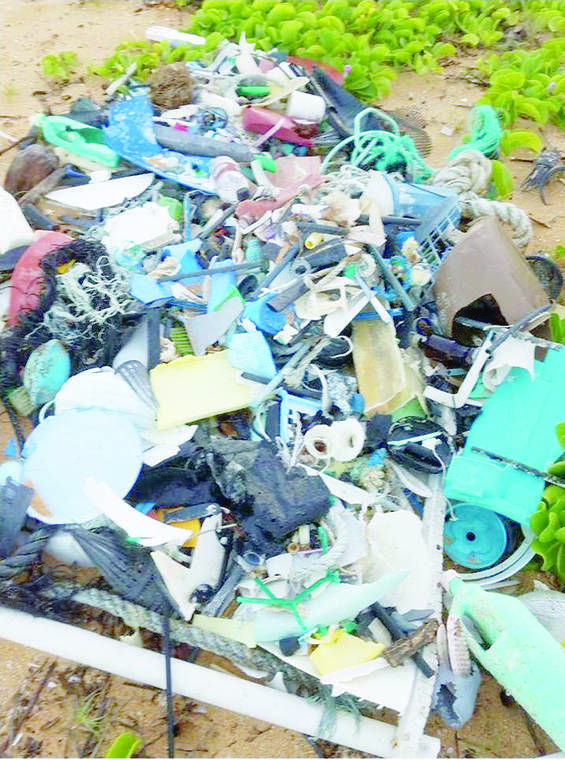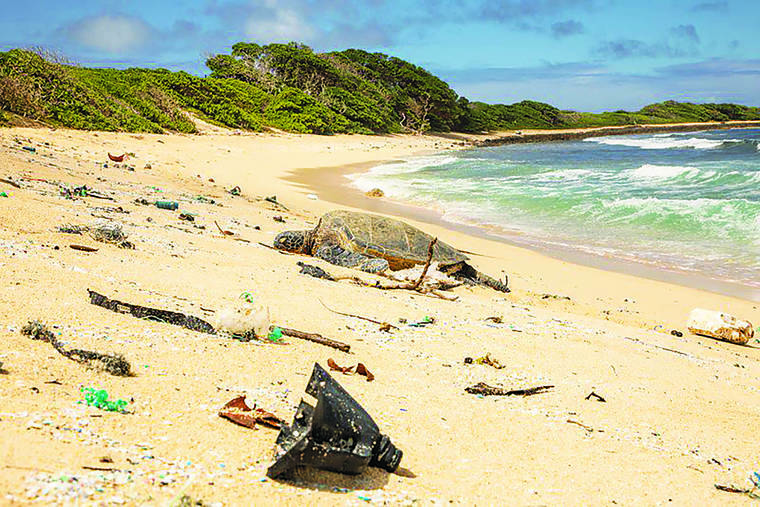LIHU‘E — The first annual Beach Cleanup Report has been issued by the Surfrider Foundation, analyzing results from all of the coastal cleanups done nationwide by the organization in 2019.
The results from Surfrider’s 2019 Beach Cleanup Program confirm the current reality that plastic is the most common material found on the beaches. It also shows the percentage of microplastics continues to increase. Nine out of the top 10 items collected on the beaches were plastic, and 25% of all items collected were plastic fragments smaller than a dime.
Some of the top items collected in 2019 were plastic fragments, food wrappers and foam fragments, cigarette butts, rope, bottles and their caps and plastic straws.
In Hawai‘i, the organization catalogued 283 cleanups statewide in 2019, compared to 367 in California, 43 in Oregon, 48 in Florida and 17 in the Northeast. On Kaua‘i, the report details the work of 3,200 volunteers who removed 107,215 pounds of marine debris from Kaua‘i’s shoreline. Nets made up more than half of that debris.
In the report, Kaua‘i Surfrider member and program co-coordinator of the Net Patrol program Barbara Wiedner said, “If we stopped doing what we do, Kaua‘i’s beaches would look very different.”
Plastic has become so prevalent on the beaches that, recently, Surfrider joined a Hawai‘i lawsuit forcing the U.S. Environmental Protection Agency to recognize plastic as a pollutant. Surfrider’s data contributed to the EPA’s decision to avoid trial and add plastic to the list of pollutants it is responsible to regulate.
Recently, the EPA found the waters around Hawai‘i’s Kamilo Beach and Tern Island to be impaired by plastic pollution, and ordered state officials to take corrective actions under the federal Clean Water Act.
The two areas were added to the list of impaired waters last week by EPA Regional Administrator John W. Busterud. He ordered the state to include them in water-quality-management plans to reduce the impact of plastic pollution on its waters, beaches and wildlife.
“Kamilo Beach is notorious for being covered in plastic, and this EPA finding will push state and federal agencies to face that reality,” said Maxx Phillips, the Center for Biological Diversity’s Hawai‘i director.
“Ocean plastic pollution is a crisis here in Hawai‘i. It chokes wildlife and carries toxins onto our beaches and through our food web. Hawai‘i’s Department of Health is now being forced to finally address this threat.”
Researchers maintain plastic pollution poses a serious threat to Hawai‘i’s water quality and vulnerable marine ecosystems. Microplastics, or plastics that have broken into tiny pieces, are emerging as a major threat to marine wildlife and water quality. Microplastics can absorb environmental toxins and get eaten by fish and other marine life and eventually be consumed by humans.
“We are encouraged that the EPA is taking steps to address plastic pollution in the ocean and on our beaches, as a major cause of water-quality impairment,” said Angela Howe, Surfrider Foundation’s legal director.
“Our Hawai‘i chapters and entire chapter network across the country are committed to addressing the plight of plastic pollution, including through the use of the full extent of our clean-water laws, such as here.”
•••
Jessica Else, editor-in-chief, can be reached at 245-0457 or jelse@thegardenisland.com.



